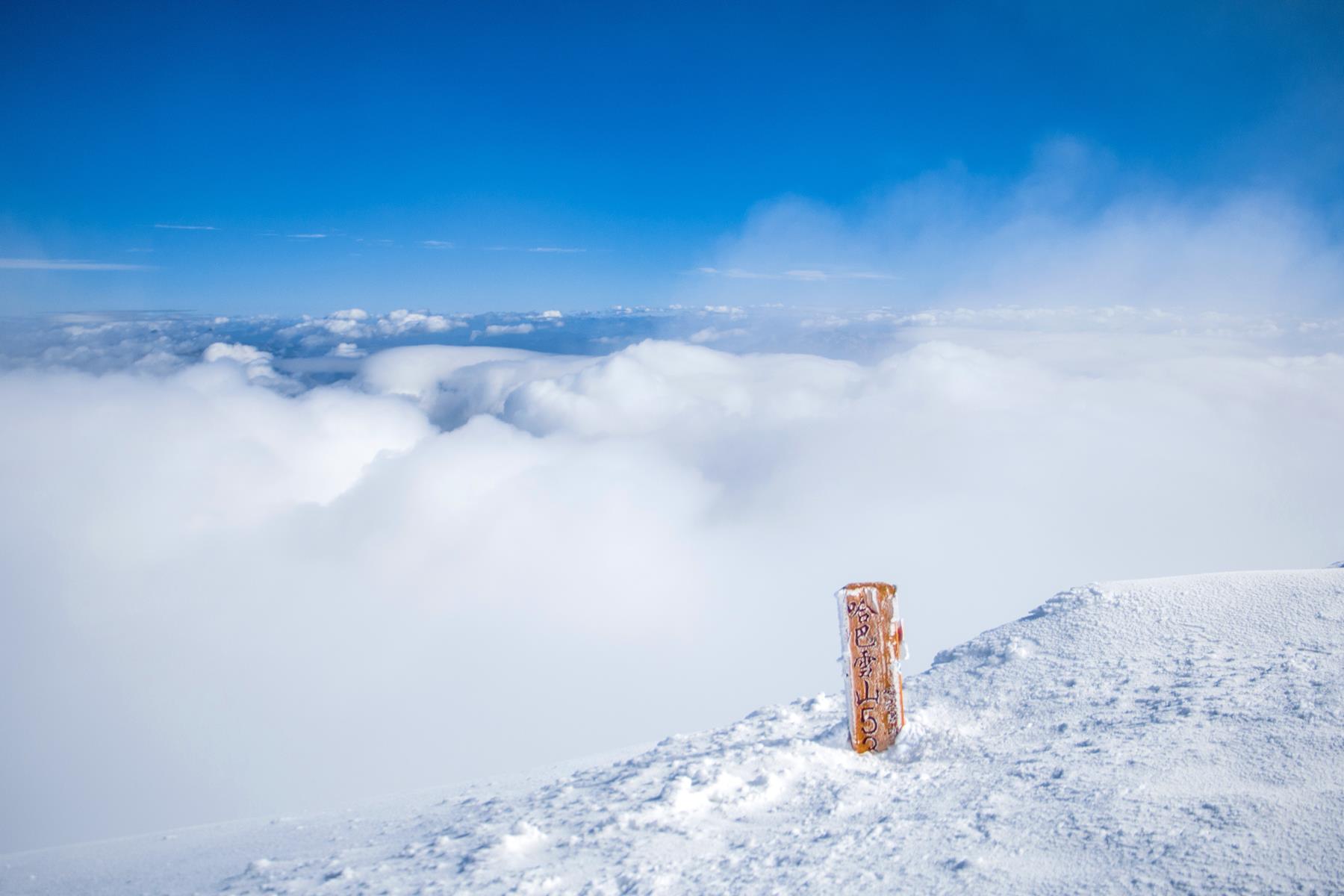
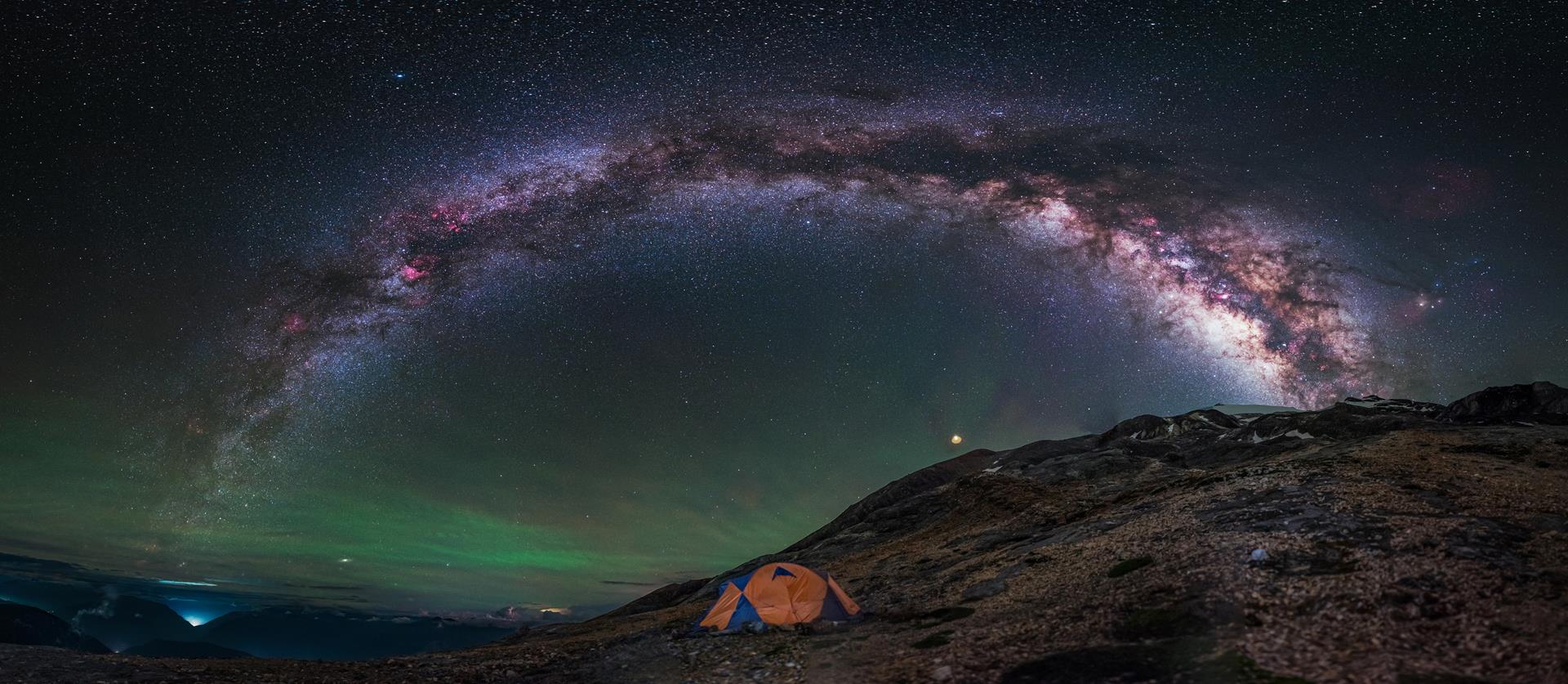
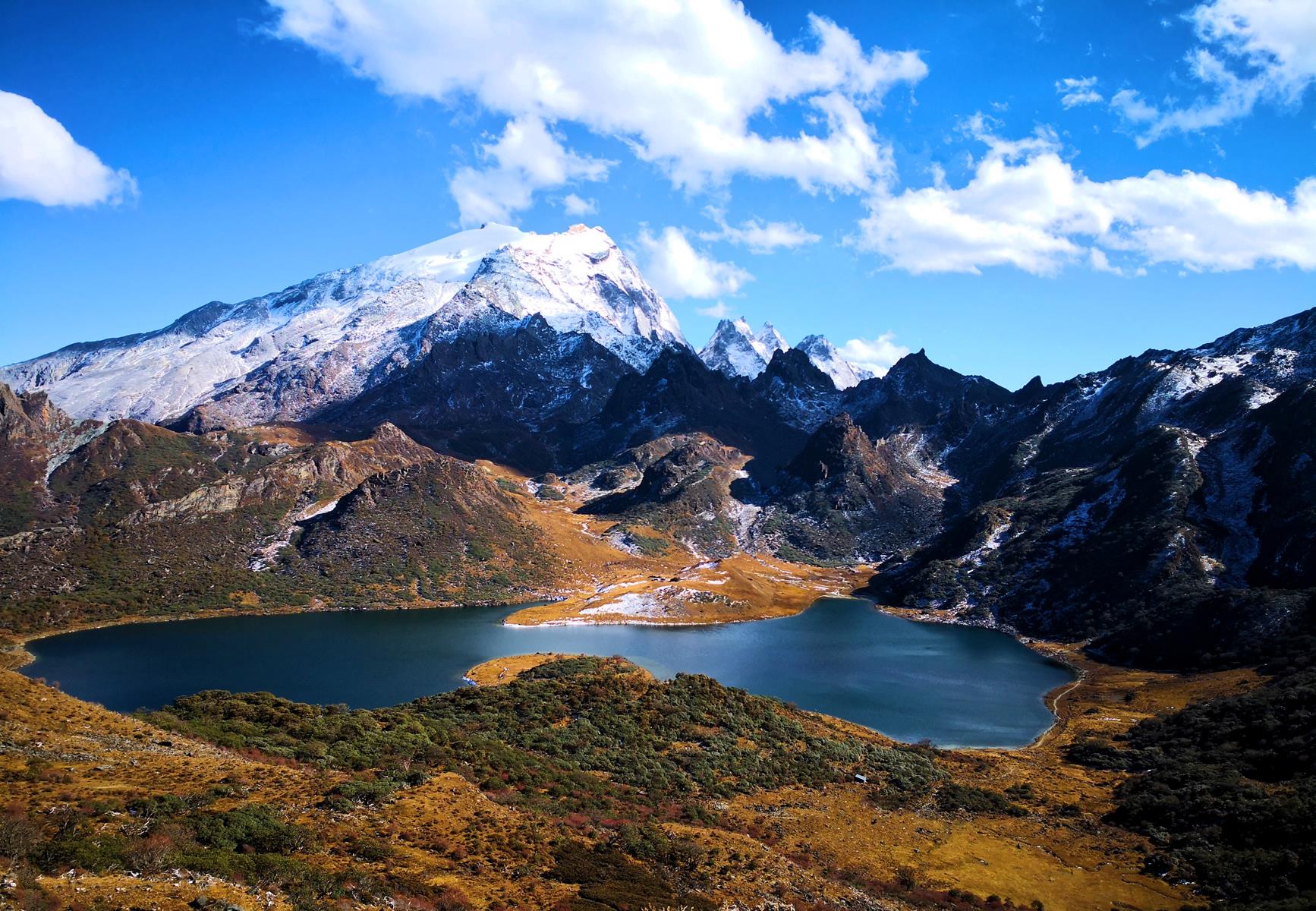


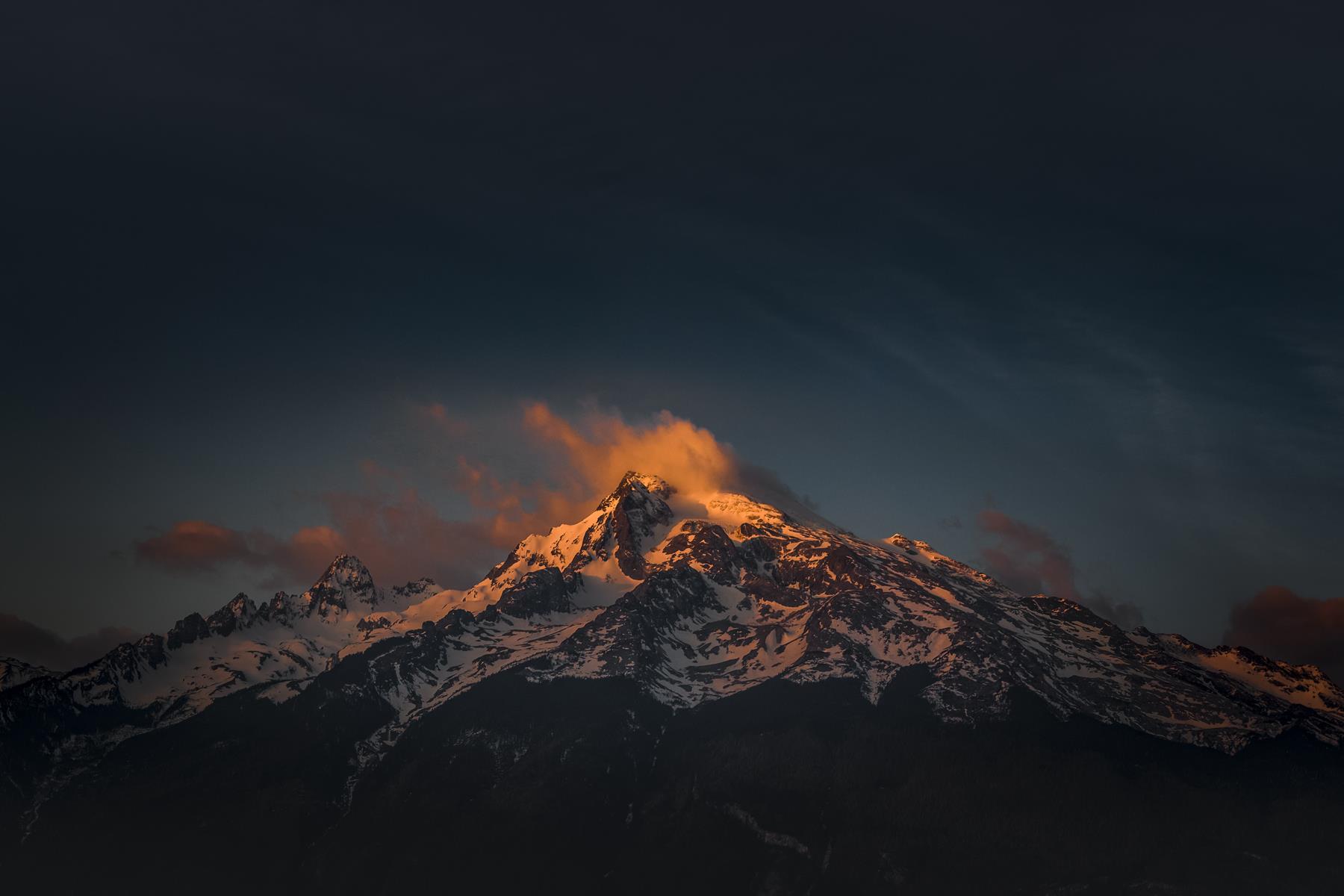
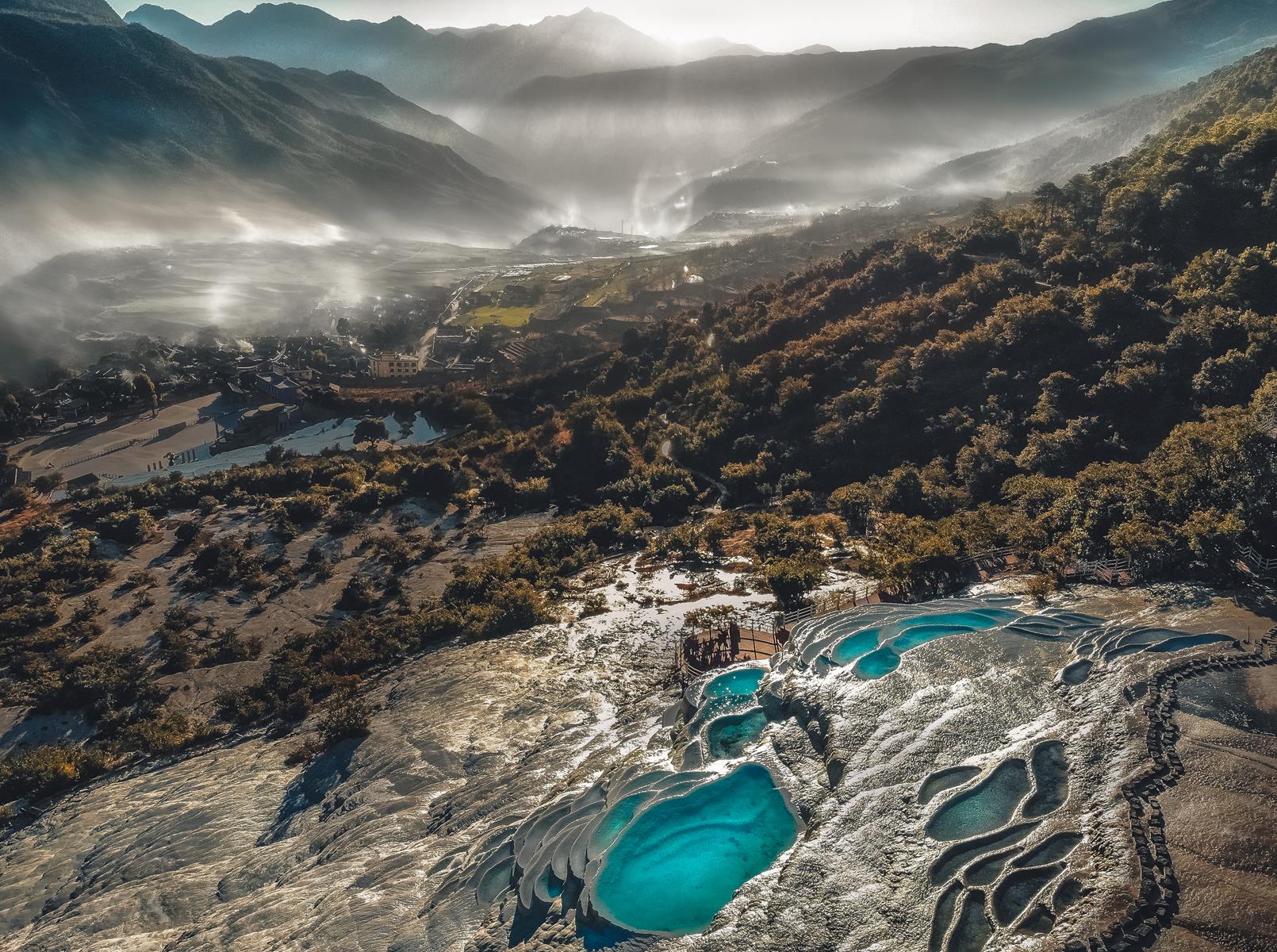
You will find Haba Snow Mountain in the south-eastern part of Shangri-La County, 120 kilometres away from the urban area.
It was sharply raised by the Himalayan Orogeny and the subsequent Quaternary tectonic movement.
The upper part of the mountain is gentle but the lower part is filled with cliffs, which makes the snow mountain precipitous, magnificent and mysterious.
Haba means 'the golden flower' in Naxi language. In local folklore, Haba Snow Mountain and Jade Dragon Snow Mountain are considered brothers.
The Golden Sand River — the upper reach of the Yangtze River — runs between the two high mountains, forming the Tiger Leaping Gorge which is the most spectacular site in this area.
The vertical alpine climate is formed because of the mountain's altitude, and thus the climates are various in ascending order.
A subtropical zone, cold temperate zone, frigid zone and paramos are distributed in different parts with different altitude.
The difference in temperature between the top and the foot of the mountain can reach up to 23℃. Snow on the top of the main peak of the mountain persists all year round.
Such climates create a fine environment for many vegetation belts covering the mountain: alpine vegetation, meadows, shrubberies, conifers such as firs and spruces, evergreen broad-leaved forests, and shrubberies in the Dry-Hot Valley, supporting many species of plants and animals.
Haba Snow Mountain is the ideal destination for skillful backpackers or travel fans.
Main Attractions
- Summit of Haba Snow Mountain
In 1995, Chinese Climbers successfully reached the top of the 5,396-metre Haba Snow Mountain, making it the tallest snowcapped peak conquered by man in Yunnan.
There is an ice and snow trail from camp one to the summit, an altitude of 500 metres, and it will normally take around three hours to reach the top.
Once up there, you can see clearly Jade Dragon Snow Mountain, Meili Snow Mountain and other famous formations.
- Camp 1
Camp 1 is located just before the 2nd grey slab at about 4800 metres. People do not normally stay here, but a small pond nearby provides water.
Base camp
The base camp of Haba snow mountain was registered in 2007 and is the only reception centre of Haba Snow Mountain.
All tourists who want to climb to the top of the mountain must camp at the base camp and complete an accommodation registration with local police.
They are in charge of the accommodation, dining, climbing equipment rental, etc. Covering the total area of 30 mu?, it can accommodate up to 140 people and is recognised as the best five-star base camp among the national climbing circle.
4. Azaleas
From April to June, when you visit Haba Snow Mountain, you will find azaleas in full bloom. You will be surprised by the many stunning varieties.
More than 200 hundred kinds of are distributed from the bottom to the top of the mountain, accounting for 70 percent of all those in Yunnan.
The colorful azaleas, azalea trees and petals in different sizes create a stunning mass of colour in the scenic area.
The red azaleas, set against the white snow, are particularly attractive – creating a contrasting radiance and beauty.
As the petals fall, visitors can also walk along the unique petal road, another amazing experience to remember from visiting Haba Snow Mountain.
Shangri-La City, Diqing Tibetan Autonomous Prefecture, Yunnan, China
(中国云南迪庆藏族自治州香格里拉市 )
Transportation:
Take a bus from Lijiang or Shangri-La to Haba Village.
Best time to visit
November and December or May and June.
Experience: Hike and climbing.













